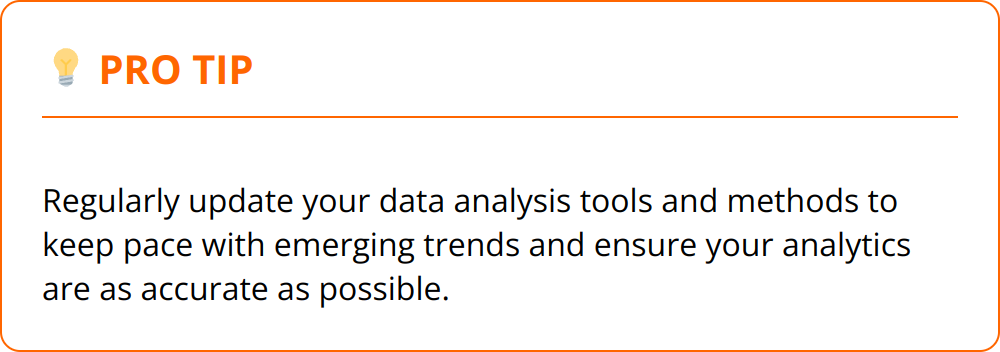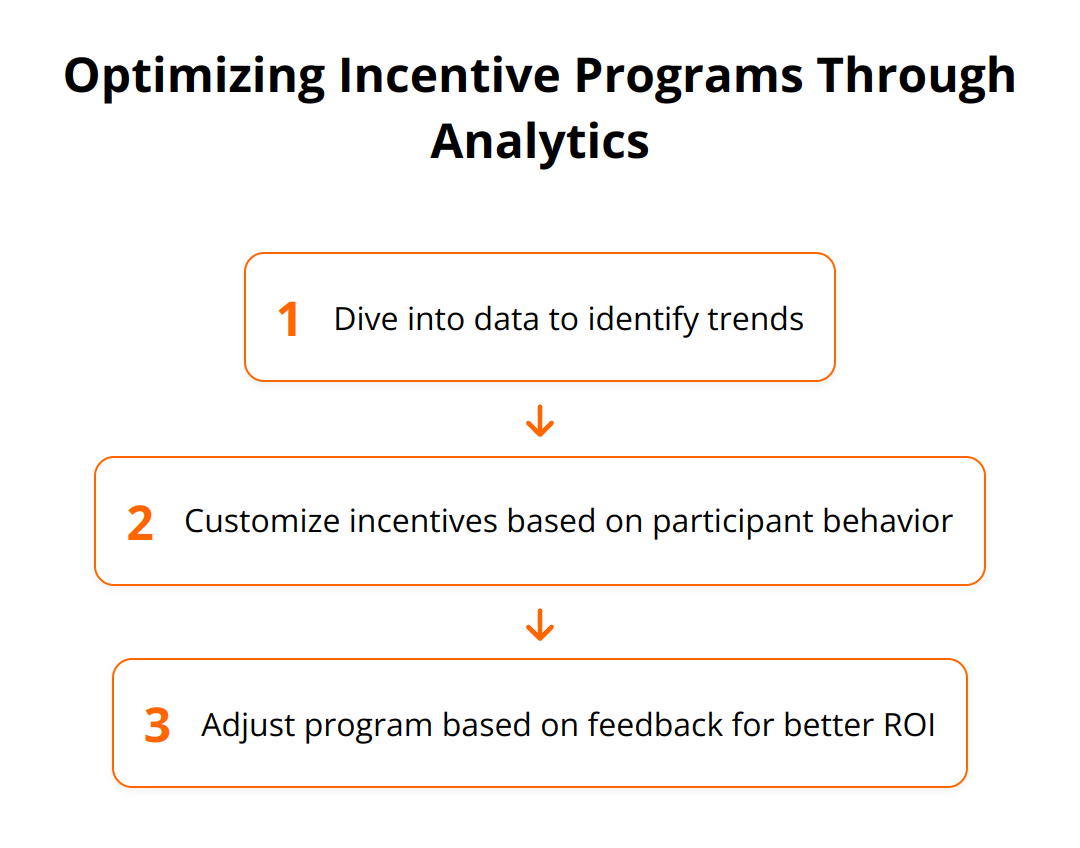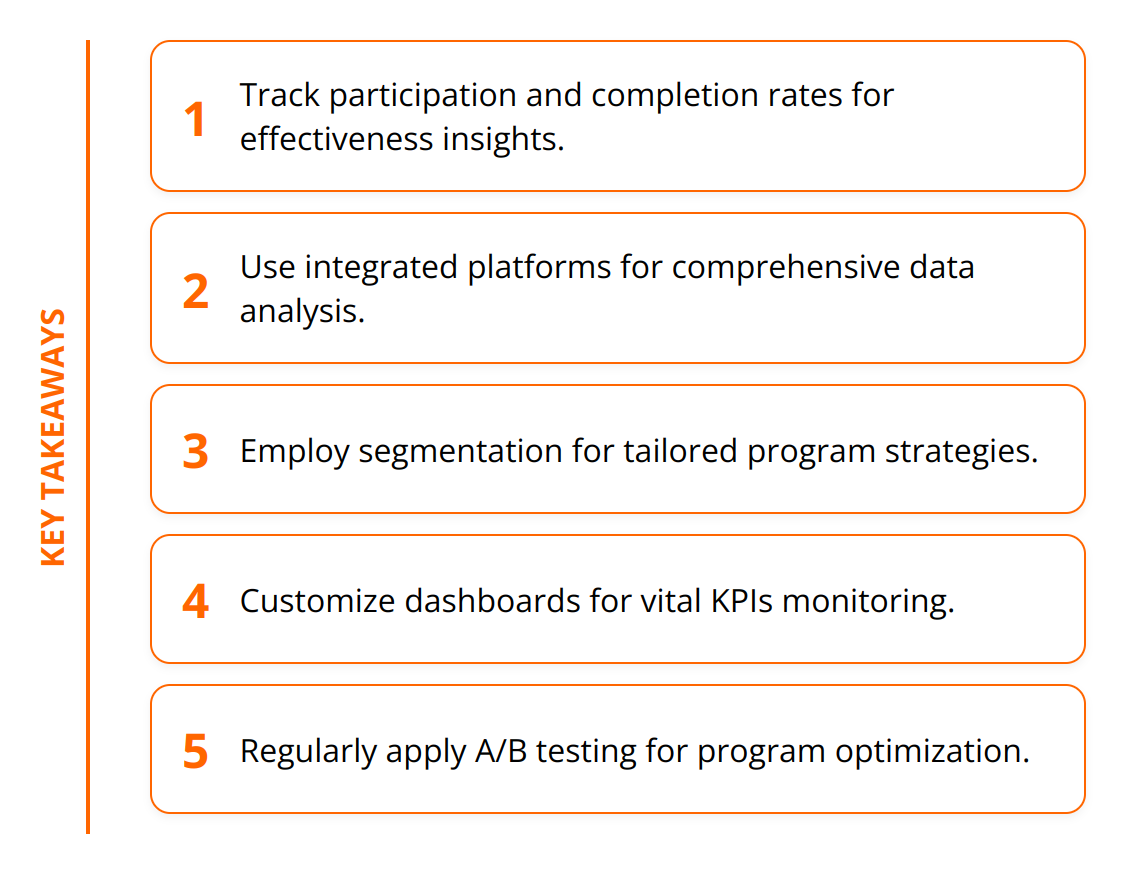
We at Reward the World understand that navigating the complexities of incentive programs can be challenging. Analyzing the performance of these programs is vital to ensuring their success. This post: Incentive Program Analytics: Practical Tips, offers practical advice on leveraging analytics to enhance incentive programs. From choosing the right KPIs to applying insights for improved ROI, we’ve got you covered.
Leveraging Analytics for Incentive Programs
In the quest for effective incentive programs, measuring performance is non-negotiable. Without a keen eye on analytics, you’re essentially flying blind. Here’s how to avoid that pitfall and ensure your incentive programs are not just operational, but optimally impactful.
Why Analytics Matter
First off, understand the immense value analytics brings to your incentive programs. It’s simple: if you can’t measure it, you can’t improve it. Analytics offers a clear visualization of what’s working and what’s not. By tracking the right metrics, you’re equipped to make data-driven decisions, leading to better engagement and ROI. Failure to do so means missed opportunities for optimization and a higher risk of investing resources into strategies that don’t deliver.

The Right Metrics to Watch
Identifying the Key Performance Indicators (KPIs) to track is your next big step. Not all data points are created equal, so focus on the metrics that genuinely reflect your program’s health and effectiveness. Some of the must-track KPIs include:
- Participation rates: A direct reflection of engagement.
- Completion rates: Indicates the effectiveness of the incentives offered.
- Cost per acquisition (CPA): Measures the cost-effectiveness of your program.
- Return on Investment (ROI): The bottom line impact of your incentive program.
Monitoring these KPIs allows for agile program management, enabling rapid adjustments to enhance effectiveness and participant satisfaction.
Tools and Tech to Harness
Fortunately, the digital age offers a plethora of tools and technologies to streamline the analytics process. Leveraging the right software can save you time and provide deeper insights than manual analysis could ever achieve. Look for platforms that offer real-time data, customizable dashboards, and automated reporting to keep you continuously informed. Tools like Google Analytics for website-based programs, or specialized incentive program analytics software, provide invaluable insights into participant behavior and program performance.
For deeper insights into incentive program compliance and UX statistics which are critical to your program’s success, exploring specialized resources such as Incentive Program Compliance and UX Statistics can offer tailored advice and strategies for optimizing your incentive programs.
In Closing
Remember, the power of analytics in incentive programs lies in its capacity to transform raw data into actionable insights. By focusing on the right KPIs and utilizing effective tools and technology, you can ensure your incentive programs are delivering maximum value for both your organization and its participants. The journey towards optimal program performance is continuous, and with analytics as your compass, you’re well-equipped to navigate it successfully.
Enhancing Data Analysis in Incentive Programs
Diving deep into the data of your incentive programs can significantly amplify their impact and efficiency. This chapter provides practical strategies for extracting valuable insights from your program’s data, focusing on integrating disparate data sources, segmenting data for nuanced analysis, and employing visualization tools for a clearer understanding.
Integrate Data for a Holistic View
Start by combining data from all touchpoints within your incentive program. This includes participant engagement metrics, reward redemption rates, and feedback responses. Employing a centralized data management platform can streamline this process. These platforms not only aggregate data but also facilitate its cleaning and normalization, making it ready for analysis. Integration underscores patterns and correlations that would remain hidden if data silos existed.

Segment Data for Targeted Insights
Next, segment your data to uncover how different groups interact with your incentive program. For example, you might analyze data based on participant demographics, geographic location, or engagement level. This segmentation reveals which incentives resonate best with certain groups, enabling you to tailor future programs for improved effectiveness. Tools that support advanced segmentation will often allow you to automate this process, saving time and reducing the risk of human error.
Leverage Visualization Tools
Finally, leverage data visualization tools to transform your complex datasets into digestible, actionable insights. Visualization supports quicker understanding of trends and anomalies, aiding in rapid decision-making and program adjustments. Platforms offering customizable dashboards are particularly effective, as they enable you to focus on the metrics that matter most to your organization. Additionally, sharing these visualizations can improve stakeholder buy-in by presenting data in an accessible, compelling format.
- Practical tips:
- Use a data management platform for integration.
- Segment your participants for targeted analytics.
- Customize dashboards in visualization tools for key metrics.
Strong Opinion: Manual data analysis and reporting are no longer viable with the complexity and volume of data today’s incentive programs generate. Employing integrated platforms, segmentation strategies, and visualization tools is not just recommended—it’s essential for any organization serious about maximizing the return on their incentive programs.
For a deeper understanding on improving incentive program compliance and leveraging UX statistics effectively, consider exploring resources like Incentive Program Compliance and UX Statistics. These can offer additional strategies and insights to enhance the success of your incentive programs through data analysis.
By adopting these approaches, your organization can not only measure the performance of your incentive programs more effectively but also uncover powerful insights to drive future success.
Applying Analytics for Program Improvement
Harnessing the power of analytics is key to fine-tuning incentive programs for peak performance. It’s about making informed decisions that align closely with participant behavior and program goals. Here are some actionable steps to ensure your incentive programs not only meet but exceed expectations.
Dive into Data for Trends
One cannot overstate the importance of identifying trends and patterns within your incentive program data. These insights offer a window into participant behaviors and preferences, guiding you on what rewards resonate most. Understanding these dynamics allows for the optimization of incentive offerings, ensuring they are both desirable and effective. For instance, if data reveals that travel rewards see the highest redemption rates during certain months, it would be wise to push these incentives during those periods for maximum engagement.
Customization Based on Behavior
Tailoring incentives to participant behavior is not a “nice-to-have” – it’s a must. This requires a deep dive into the specifics of how different segments interact with your program. Customization could range from personalized email communication about a participant’s progress within the program to offering rewards that align with their past preferences. Such personalization significantly enhances the participant’s engagement and attachment to the program.

Adjust for Better ROI
The ultimate goal is to ensure your incentive program delivers a solid return on investment. This involves continuously analyzing program data to refine and adjust your strategy. It’s about finding the sweet spot between what motivates your participants the most and what delivers the best ROI. Critical to this process is establishing a feedback loop where participant responses, both qualitative and quantitative, inform program adjustments. This could involve phasing out less popular rewards, introducing new reward tiers, or even altering the qualification criteria to better match participant effort and reward value.
- Action Steps:
- Regularly review participation and completion rates for insights into program effectiveness.
- Employ segmentation analysis to tailor incentives to different groups within your participant base.
- Use A/B testing to fine-tune the components of your program, from the communication strategy to the rewards themselves.

Opinion: Skipping analytics in the lifecycle of an incentive program is akin to setting sail without a compass. Analytics not only guides the course but also signals when to pivot for optimal results. Investment in robust analytics tools and strategies pays off by elevating the effectiveness of your incentive programs, directly contributing to higher engagement rates and better ROI.
For more in-depth strategies on tailoring incentives and enhancing user engagement, consider exploring resources like Market Research Rewards and Personalized Rewards Strategies.
Adopting these measures ensures your incentive program stays ahead of the curve, remaining both relevant and engaging to your target audience. The path to program refinement through analytics is continuous, encouraging a culture of innovation and adaptability within your incentive strategies.
Final Thoughts
Throughout this post, we’ve underscored the paramount importance of analytics in incentive programs. It’s clear that diving deep into analytics offers a roadmap to understanding what truly engages participants and drives superior program performance. By focusing on key performance indicators, leveraging advanced tools for data integration, conducting targeted segmentation, and utilizing visualization for insights, businesses can transform their incentive programs into powerhouse vehicles for engagement and ROI.

The journey towards optimizing your incentive programs doesn’t end here. It evolves into a continuous improvement cycle, fueled by the insights garnered through diligent analytics. This cycle is not just about fine-tuning existing programs but also about fostering a culture of experimentation and innovation. The data at your disposal should inspire new strategies to engage participants, whether through personalized incentives, gamified elements, or entirely new reward mechanisms.
We encourage businesses to embrace analytics not just as a tool but as a mindset. The landscape of participant engagement is ever-changing, and staying ahead requires a commitment to iteratively analyzing, learning, and applying findings. Experimentation is key. Test new approaches, learn from the data, and don’t be afraid to innovate. The insights you gain today could lead to the breakthrough strategies of tomorrow.
At Reward the World, we provide an advanced platform that not only simplifies the rewards process but also offers comprehensive analytic tools to help you understand your audience better. Our solutions are tailored to ensure that your incentive programs are as effective and engaging as possible, reaching a massive 250 million-user base across 15 languages. With instant reward delivery, GDPR compliance, and 24/7 availability, our platform is designed to elevate your customer engagement and boost company performance, ensuring your business stays ahead in the competitive landscape.
As we wrap up this Incentive Program Analytics: Practical Tips, remember that the success of your incentive programs hinges on your willingness to explore, analyze, and adapt. Analytics offers the clarity needed to make impactful decisions, but it’s your innovative spirit that will truly set your programs apart.
